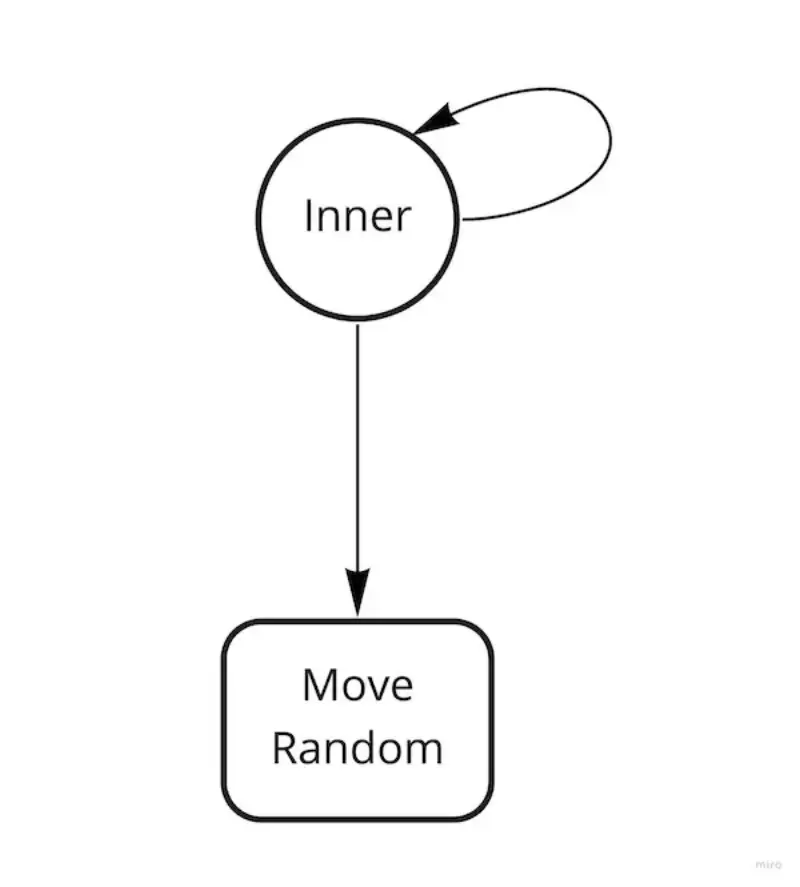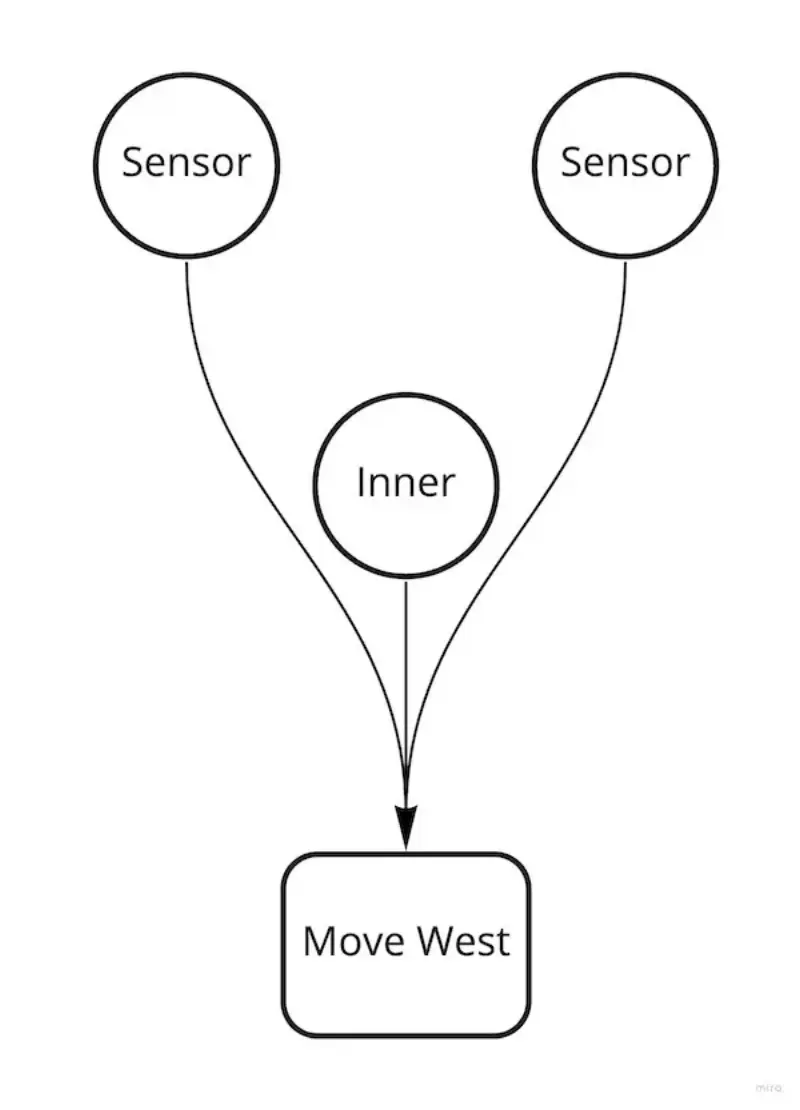This is the first in a short series of posts heavily inspired by the YouTube video I programmed some creatures. They Evolved. by davidrandallmiller.
The Big Idea
We start with a 128x128 grid populated with 1000 nodes. Each node has a randomly generated neural network comprised of sensors like “distance from eastern wall” and “local population”, inner neurons, and actions such as “move north”, “move random”, or “kill node in the way”.
Those sensors, inner neurons, and actions are joined into pairs we’ll call genes and a collection of genes will be a genome. Each generation will last 300 “steps” (this is to allow creating 10-second long videos at 30 frames per second). At the end of each generation the nodes that are in the “breeding area” survive and the rest do not. Surviving nodes are randomly combined into pairs, their genes are mixed (and rarely mutated), and then children are created and randomly placed throughout the grid. Sometimes there will be obstructions (“walls”) that get in the way of nodes.
The nodes that make it to the breeding zone get to pass along their genetics and over time those traits will become more and more prevelent causing the survival rates to increase.
Here’s a video of generation 1 - notice that there is a breeding zone highlighted on the left side of the grid, there are 1000 nodes, and two walls. As the video runs notice that some nodes move to the walls and to the center (actions), some don’t move (their “stay put” action might be heavily weighted), or they might move randomly. Notice, also, that the nodes have a variety of colors. The color of the node is determined by it’s genetics so two nodes similar colors are (probably) similar in genetics.
| Stat | Value |
|---|---|
| Population | 1000 |
| Survivers | 132 (13.2%) |
| Steps | 300 |
| Genes | 4 |
| Inner Neurons (max) | 1 |
With high genetic diversity there very few similar nodes, but the most common (2% of nodes) was:

And after more generations (this is generation 1000 but it stablized far earlier).
| Stat | Value |
|---|---|
| Population | 1000 |
| Survivers | 824 (82.4%) |
| Steps | 300 |
| Genes | 4 |
| Inner Neurons (max) | 1 |
A few things to notice in this video:
- The node colors have far less variability (meaning less genetic diversity)
- The nodes move quickly towards the breeding area
- Some nodes that get stuck behind the wall will move randomly until they get around it but some will not
The most common genetic structure is:

This makes sense - to survive the nodes need to move to the west. For most nodes that is the only survival trait that matters so it becomes the predominate trait quickly.
With this brief introduce into the project, over the next couple of posts I’ll talk a little more about the implementation of the solution. I’m letting you know now, though, I did not do this using matrices. The nodes, genes, and genomes are all just normal .NET objects (implemented in C#) - so if you’re hoping to learn about how neural networks work I would suggest another blog series. But if you’re curious how we get from a small number of randomly surviving nodes to a generation of survivers that do what it takes to live please join me!